David Poxon was born in the Industrial heartland of England, but now makes his home in the rural countryside of Shropshire, U.K. He is an elected member of the prestigious Royal Institute of Painters in Watercolours and is also a signature member of the National Watercolor Society of America.

His new 188-page book Watercolour Heart & Soul is now published, and he will be presenting a demonstration at the 2nd Annual Watercolor Live virtual art conference.
A recurring theme in David’s work is the reclamation by nature of that which man has created and abandoned, finding renewed life between object and environment.
His medium of preference is watercolour, and he says he is “a purist in the sense that mainly transparent pigment is used, and white paint avoided.”
Here’s more about his watercolour techniques and inspiration.
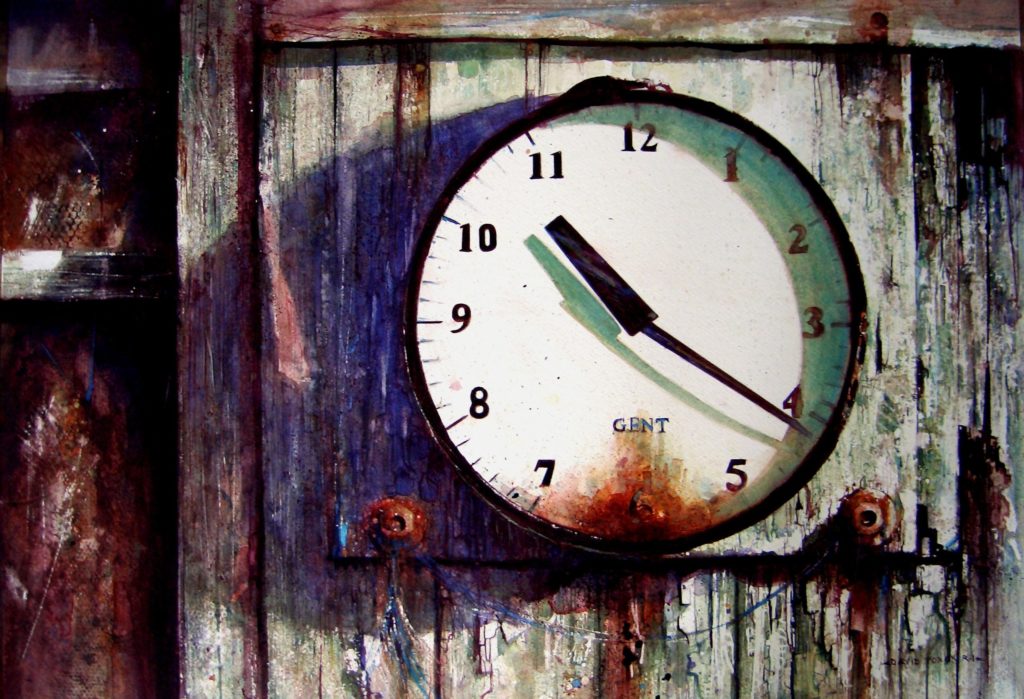
This painting won the Shanghai Biennial and got me my first big breaks in China. The clock was attached to an old Cricket Pavilion and had long stopped working. To be true to the subject I waited for the correct time before quickly drawing and photographing it in order that the cast shadows from the clock hands would be an accurate reflection of the minutes past the hour. So hence the title, “Killing Time,” waiting for inspiration.
Stimulating Watercolors
BY DAVID POXON
I aim to record what is seen and felt in a subject as accurately and realistically as possible, believing that any finished painting should attempt to transcend a mere visual experience and reach out to the viewer in a stimulating, emotional, and engaging way.
Totally fascinated with the technical challenges that pure watercolour painting presents, my working method requires patience and preparation. Thinking about the subject whilst exploring its ‘construction’ through drawing, and refining and rehearsing passages that stretch my abilities as a painter, provides my constant motivation. This reverential approach is very much born out of the respect I feel for the subjects that call me.
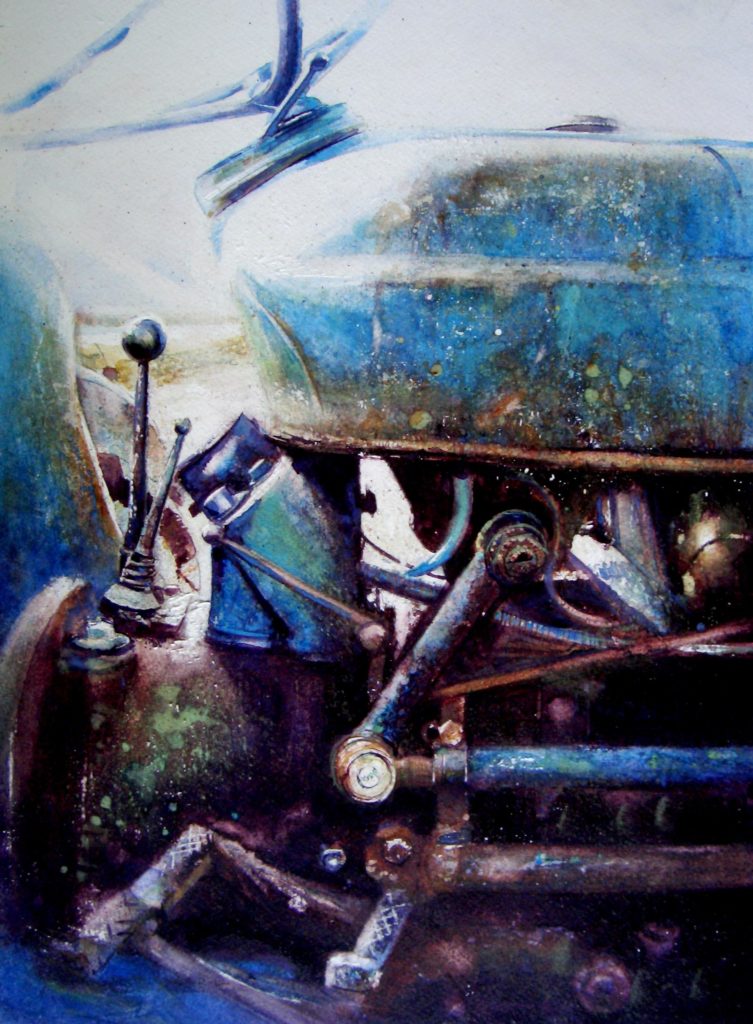
I wanted to capture the atmosphere of the late summer Barley harvest. Where I live in rural Shropshire, England I am surrounded by beautiful countryside and the machines that maintain it.
These tractors are modern day workhorses and each has its own characteristics. As a young boy my Father would take me to collect loads of potatoes in his old truck. The treat of the day was to have a ride on the farmer’s tractor. Tractors were the first things I learned to draw and paint.
The Subject Hunt
Subject hunting trips are usually frantic and fast-paced expeditions. I go armed with a small pad, drawing kit, camera, and tape measure to record size and scale. When the light is right – that which gives strong cast shadows and emphasises tonal definition – I am ready to go exploring at a moment’s notice. Being aware of potential subjects is very much a state of mind; inspiration can strike in the unlikeliest places and it’s important to have my “artist radar” on maximum alert.

This is an old lister engine the farmer had used to power his milking parlour; it had a wonderful array of subtle blue to green and that glorious amber rust and soft shadow plays. I was so excited by this subject; it took me a month to paint!
Painterly Possibilities
I never rearrange a possible subject, as this can give an almost artificial atmosphere to the work. Rather, I change my position within the subject area until a sense of the painterly possibilities emerges. I move rapidly from one scenario to another, stopping to make quick drawing notes, taking photos for fine detail, and measuring where necessary.
Occasionally a more formal on-the-spot drawing is called for. Frottage is a useful technique to have in my armoury to instantly create an impression of texture, shape, and tonal extremes. An instant record of any object can be captured in a few moments with the aid of copy paper and a soft pencil.
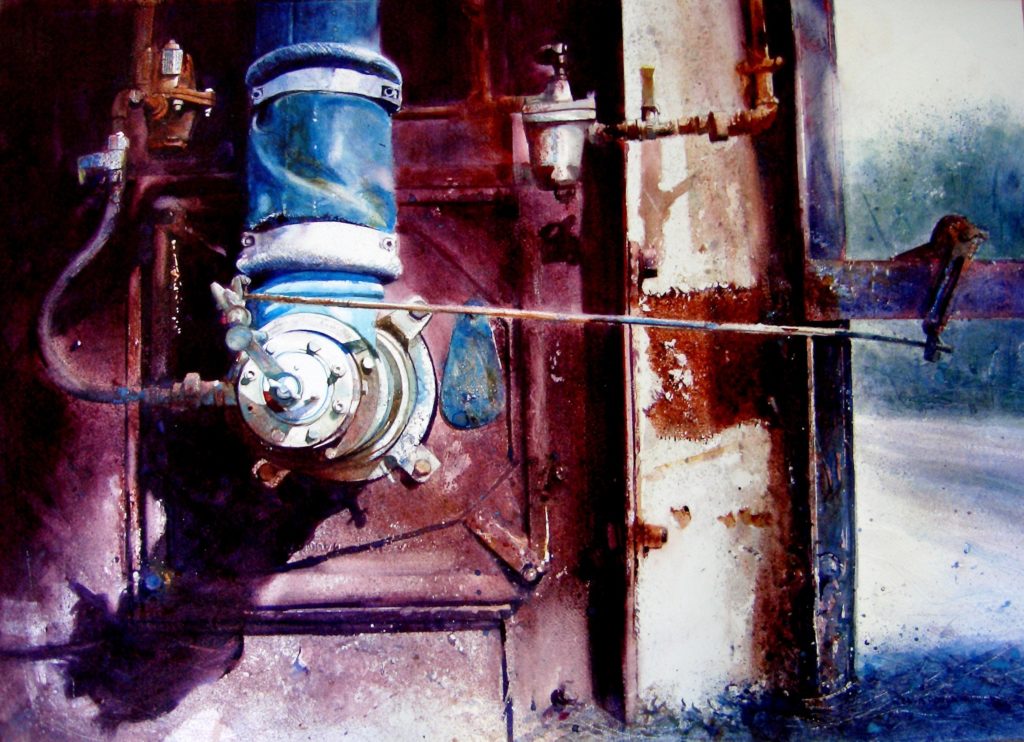
This subject and its format is typical of the compositional choices I make. A discarded factory and this painting is my take on a typical post-industrial scene. My early years were spent surrounded by Industry and factories which were my playground while growing up. Now long gone, this post-Industrial age gives us as painters some wondrous subjects.
It is only later when back in my studio that the day’s collection can be fully examined. As my painting method means that days or weeks are spent on a work it’s necessary to gauge whether my enthusiasm for what at first seemed like a good capture will sustain.
Some projects are far more complicated than others, and this is where accurate drawing and preparation are vital. There can be no obvious drawing errors when attempting to record the parts of engines or tractors, as it’s inevitable that an expert will be in the gallery and spot any embarrassing mistakes. Taking time to get the drawing right will avoid a world of pain later! These machines and scenarios have characters of their own, and I treat them as portraits in respect to their features.
The next step is to produce an accurate line drawing. I always work on stretched heavy watercolour paper held down onto marine plywood boards. Having a stock of these of various sizes always available means that my options are never restricted.
My final line drawing for transfer to the watercolour paper will be kept to an absolute minimum in terms of detail. The aim is to provide a simple skeleton shape. I regard this very much as scaffolding in the sense that when the painting is begun my process will rebuild the subject on the paper.
The next step is protecting areas to be kept white. I use anything that comes to hand to do this: scraps of paper, objects, masking fluid. It’s better to protect more whites than I may need, after all there are very few actual real whites in nature, and I can blend them away later in the painting if they are unnecessary. At this stage the ‘work’ does not look anything like it might end up; holding onto that final vision in the mind is vital!
The first washes tend to be splashy affairs with mixes about the consistency of milk. I try to get 7 or 8 layers of wash down, wet-on-dry, to get the paint body onto the paper. These are exploratory in the sense that a finished work may have more than 20 transparent wash layers.
The drawing may become lost amid the seeming chaos of these first applications; finding the scaffolding drawing sometimes requires the tenacity of an archaeologist. Knowing where I want the painting to go only comes through experience with this type of method.
My board is kept flat to maximise any granulation effects, but rocking it occasionally encourages runs and blending. Texture is important to me, so I will take any benefits the pigments throw my way. Balancing the medium’s natural tendencies while finding colour ways and exploiting light effects, counterchanged with complimentary darker passages, is an exciting juggling skill.
A Word of Advice
Watercolour has a reputation for being the most difficult medium to master, often seemingly to have a will of its own. With experience you can limit the chances of the paint running away from your subject and wield a certain amount of control by stepping down through the tonal register with multi layers of wash, working light to dark, and slowly steering the painting towards the vision that first inspired you.
This patient approach can be very rewarding, after all, life teaches us that you only get out of something what you put in.
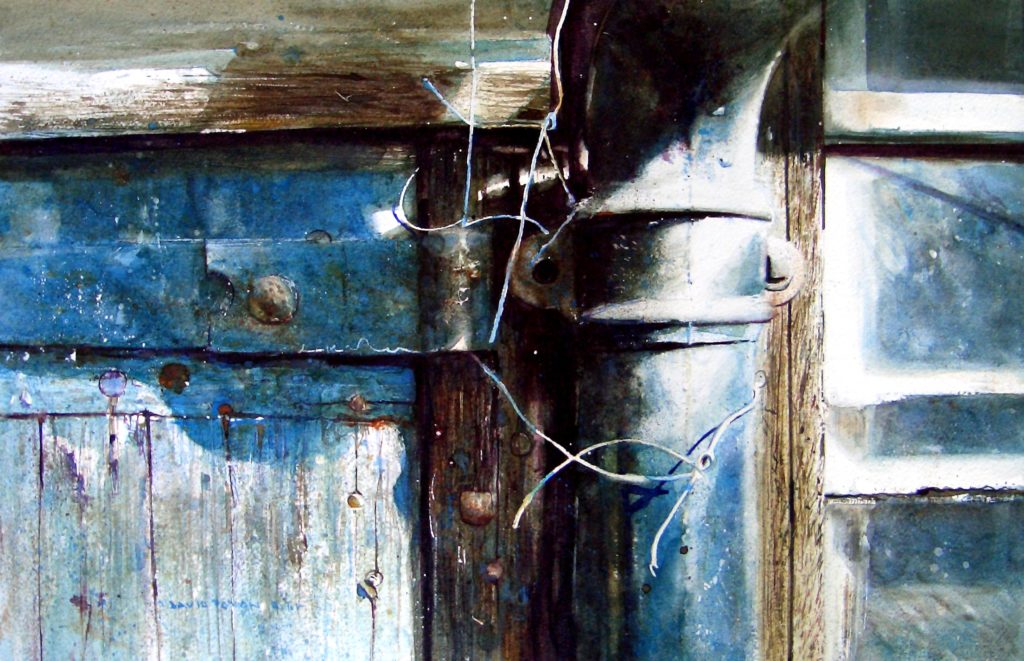
I love to get close to my subjects and explore all the frail surfaces slowly transitioning. Watercolour is the perfect medium for capturing this natural process of reclamation. By overlaying multiple washes of transparent colour you can step down in value, but with very careful application maintain the glow from the paper that gives watercolour its unique characteristics.
For my upcoming Watercolor Live demo, I have chosen a seemingly simple subject that encompasses the elements which constantly appear in my work: texture and multi-layering for extreme value: an ancient building in Rome I came across on my travels.
We will ‘zoom’ in on the aspects that give me the greatest painting pleasure – all those textural details and rich colours!
My works can often take days or weeks to complete. Given the obvious and necessary time limit for my Watercolor Live demo, I have devised a way that can give a snapshot into my process for viewers in an easy to understand and follow system. I hope Watercolor Live fans will enjoy a small glimpse into my world and techniques. Enjoy.
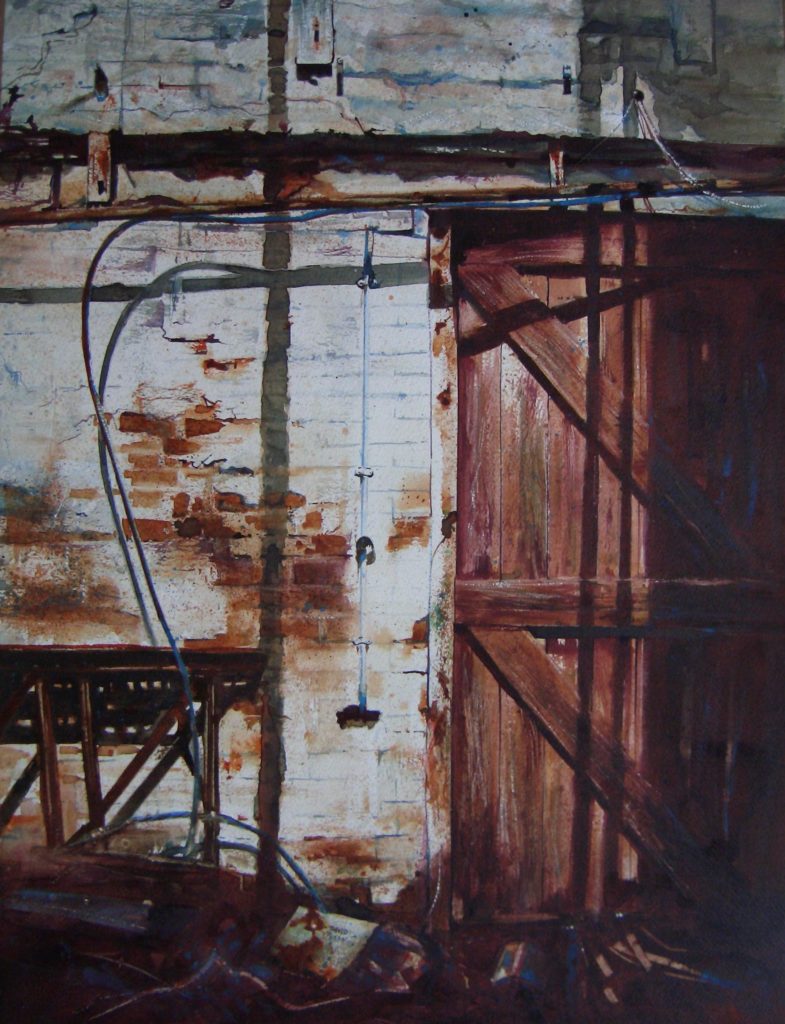
The solitude and silence in this abandoned workplace had an almost intangible presence. Its walls seemed to be imbued with the energy of the workforce long since gone. The crumbling textures, peeling paintwork, strong cast shadows, and delicate trail of old cables gave me all the painterly challenges I look for in a subject.
Connect with David Poxon at www.DavidPoxon.co.uk and at Watercolor Live in January 2022.

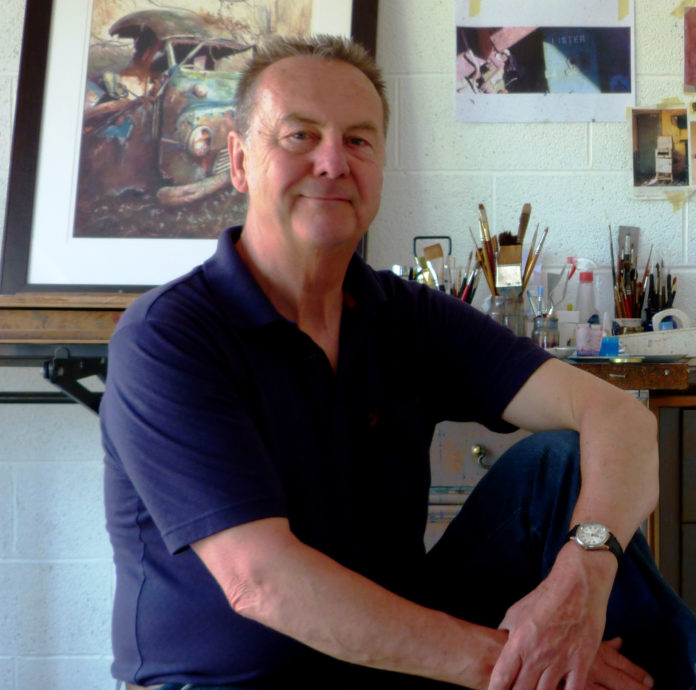







See you all at Watercolor Live ! It’s going to be AMAZING !
Congratulations for your talent !!! I really appreciate your art, you tough me with the atmosphere created and all the details, the colours… congrats and Happy Christmas time! 💕
[…] Holter, Wennie Huang, Paul Jackson, Amit Kapoor, Tom Lynch, Carol McSweeney, Julie Gilbert Pollard, David Poxon, John Salminen, Thomas W. Schaller, Richie Vios, Carrie Waller, and Stewart […]
Couldn’t believe, at first glance, these exquisite works of Art were water colours. Inspirational.